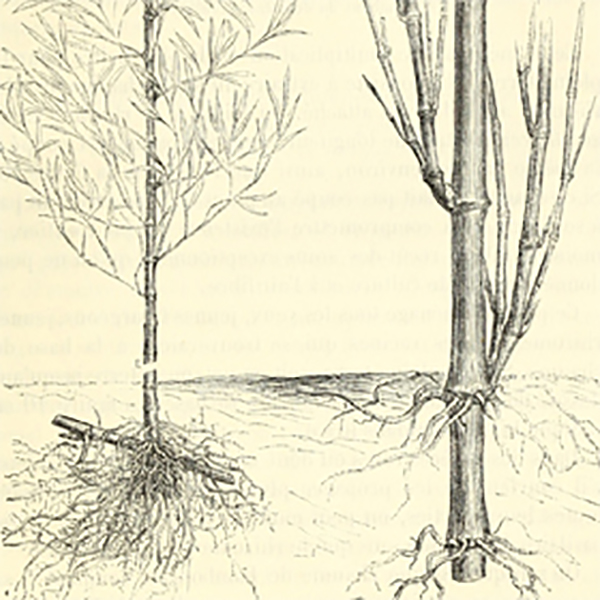
By Dirk Coburn, M.C.H.
At Weston Nurseries we carry from time to time two types of bamboo plants: clumping bamboo, and running bamboo. The clumping genus that is hardy to our service area and that we carry when our growers offer a quality stock is Fargesia, the fountain bamboo. I want to discuss running bamboos. The genus that we carry from time to time is Phyllostachys. In the past we have carried Pleioblastus, Sasa, and Sasaella which are also running bamboo genuses.
Running bamboo spreads by sprouting from rhizomes that migrate laterally underground. Since bamboo shoots can be difficult to control through mowing, and can run under a walkway or in some cases even a driveway, it is a good idea in most cases to surround the entire bed with a root barrier. A deep foundation or other existing impenetrable wall at least 30 inches deep can form part of the barrier for a bed.
Weston Nurseries carries a heavy-duty polymer barrier product that can be inserted vertically into a narrow trench dug around a bed to contain the roots of running bamboo. The barrier is 30 inches wide (so 30 inches deep when installed) and can be purchased by the foot.
Root barriers can effectively control other rhizomous running plants, including:
· Athyrium felix-femina – lady fern
· Convallaria majalis – lily-of-the-valley
· Dennstaedtia punctilobula – hay-scented fern
· Pachysandra terminalis
· Wisteria – especially the Asian species W. floribunda and W. sinensis
· Xanthorhiza – yellowroot
Root barrier is not effective to inhibit aggressive spreading through above-ground stems or “stolons” that root where they touch the ground, or through dispersal of seed. Spreading by stolons or by gravity-driven seeds can be discouraged by surrounding a bed with some combination of hardscape, pavement, a crushed stone bed, and mowed lawn. Spreading by seed can further be discouraged by use of a pre-emergent weed control to inhibit germination of seeds that are spread by wind or by wildlife. All of these methods – root barriers, hardscape, pre-emergent controls – can reduce the need for laborious hand-pulling or digging of undesired shoots and seedlings or for application of herbicides in our gardens.
Some plants spread by both rhizomes and another method, and may require both a root barrier and another control. For example, Convallaria majalis spreads most aggressively by rhizomes and secondarily by seed dispersal. Gardeners who want to contain that plant may want to consider both a root barrier and applications of pre-emergent controls.









